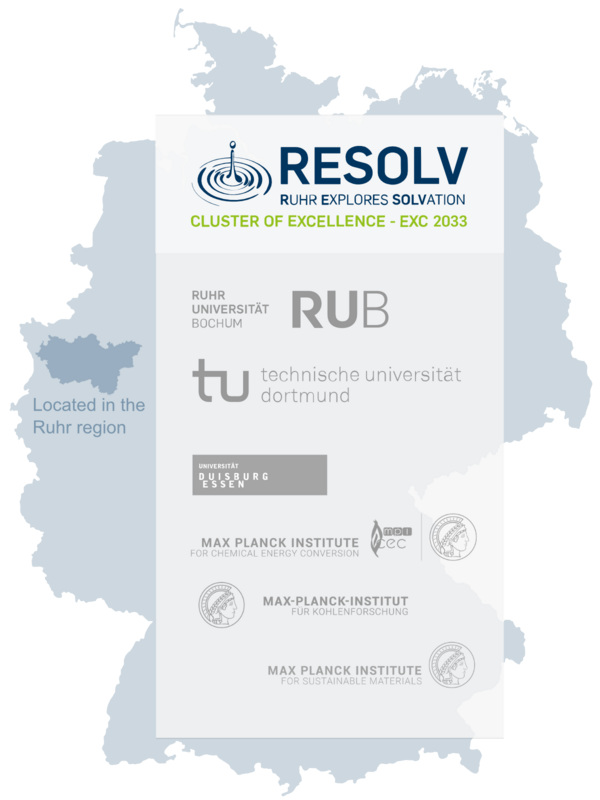Prof. Dr. Martina Havenith and her group at the Department of Physical Chemistry II at RUB have developed a new method to map the calorimetric properties of water molecules surrounding alcohol molecules. The brand-new technology, THz calorimetry, can access energy and structural changes of the water molecules that surround dissolved molecules, explain the scientists in a newly published paper in Angewandte Chemie. The scientists’ long term aim is to apply a similar approach to bigger molecules, like proteins or enzymes, and to investigate the interplay between these biomolecules and water, a knowledge that could be used for drug design.
“This publication is the first realization of the ideas we have presented in the ERC Advanced Grant. We have proven that a THz calorimetry can be developed“, says RESOLV speaker Martina Havenith. The pan-European funding body ERC (European Research Council) has recently financed the team of Prof Havenith with 2.5 million Euros in five years to develop the new technique.
The underestimated role of water in biology
Fundamental biological processes like protein folding, protein-protein interactions and enzymatic reactions take place in watery solutions and depend upon the ability of the reacting molecules to recognise themselves in a solvent. Molecular recognition is mediated through various chemical interactions that can be studied by calorimetry, measuring enthalpy (heat transfer), entropy (a measures of disorder for a system) and other associated energetic parameters.
Unfortunately, current calorimetric approaches are all based on heat transfer, hence they analyse macroscopic changes on time scales of 1 to 100 seconds and can do that only at equilibrium, i.e. when molecules are already bound. However, as Havenith points out, a successful reaction is the result of a dynamic interplay between the partner molecules and the solvent. The Angewandte research now shows that THz-Calorimetry can yield calorimetric data locally and in real time.
THz laser spectroscopy passes the test
Every solute immersed in water perturbs the H-bonding structure of water molecules in its proximity (the so-called hydration shell), which is therefore different from bulk water. It is known that, depending on the immersed molecule’s size and form, surrounding water molecules could form a water cage with tetrahedral structure, or a more disordered structure with weak hydrogen bonds (called interstitial water).
In the Angewandte paper, the RUB scientists analysed a series of five alcohols (from methanol to tert-butanol) in water. They showed that, upon changing the temperature, THz spectra can be used to infer the changes in the more or less structured hydration water, since the two types leave a distinctive signature on the low frequency spectrum around 200 cm-1. Moreover, these local changes can be directly correlated with thermodynamic data: “The new method allows us for the first time to directly extract from THz spectroscopic data parameters like entropy and enthalpy around solutes, which are crucial to characterize molecular recognition”, says Havenith.
As a final test, the scientists compared the temperature-dependent changes in heat capacity taken from literature data with the same values deduced by THz-calorimetry data, finding a one-to-one quantitative agreement. A future step of the research will be to apply the novel methodology to processes under non-equilibrium conditions.
Original publication on Angewandte Chemie International Edition














